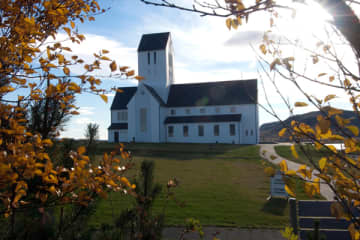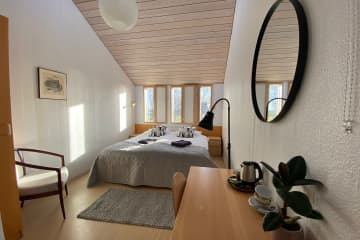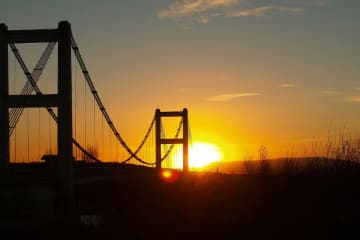Skálholt Church
Situated in the lower part of the Biskupstungur valley between the rivers Hvítá and Brúará, Skálholt is one of Iceland's places of special historical interest. For seven centuries it was the scene of the most dramatic events which shaped the political, spiritual and cultural life in Iceland. Its early history is traced back to the 11th century when religious disputes were at their sharpest in Iceland. Within two centuries of the settlement of Iceland, the first bishopric was founded at Skálholt in 1056 for South Iceland, and soon a second at Hólar in 1109 for North Iceland.
The man who chose Skálholt as the site of the first Episcopal see in Iceland was Ísleifur (1006 - 1080), son of Gissur the White. Skálholt had earlier been his patrimonial estate and his grandfather, Teitur Ketilbjarnarson, was the first settler there. According to an old account, Skálholt was at that time "the largest town in Iceland". Ísleifur's father, who was a wealthy aristocrat and a redoubtable political figure as well, played a decisive role in the Christianization of Iceland and the future status of the church. He built the first church in Iceland at Skálholt around the year 1000.
In the 12th century bishop Klængur Þorsteinsson built a great cathedral at Skálholt. It was a sumptuous edifice made of timber shipped from Norway. For centuries Skálholt was the centre of learning and culture in Iceland, a status which lasted up to the Reformation in 1550.
In 1954, a team of archaeologists, while digging up the foundations of the old cathedral, came upon a sarcophagus which was believed to contain the skeleton of Páll Jónsson, one of the most powerful bishops of Skálholt. His sarcophagus, together with a few relics found at the scene, is now on display in an underground vault beneath the new memorial church built during 1956-1963 on the site of the old cathedral. All churches in Scandinavia contributed financially to its construction.
The last Catholic bishop of Iceland, Jón Arason, was executed at Skálholt in 1550, along with his two sons. He had opposed the Reformation imposed upon Iceland by King Christian III of Denmark. Today, a memorial stands at the site of the execution. Arason's Episcopal robes are on display at the National Museum of Iceland in Reykjavík.
Today, Skálholt is visited for the new cathedral, the tomb of bishops, the museum, and the collection of ancient books in the tower.













